Best Mobile Medical Alert System IN 2024
Medical alert systems, also known as Personal Emergency Response Systems (PERS), are devices designed to signal the presence of a hazard requiring urgent attention and to summon emergency medical personnel.
Brio House is an independent review site. We may earn money when you click links inside our site.
Medical alert systems, also known as Personal Emergency Response Systems (PERS), are devices designed to signal the presence of a hazard requiring urgent attention and to summon emergency medical personnel. These systems are typically characterized by a wireless pendant or transmitter that can be activated in an emergency situation. Upon pressing the button on the device, communication is established with a monitoring center operator who can then contact emergency services as needed.
Importance of Mobile Medical Alert Systems
In the rapidly evolving landscape of healthcare technology, mobile medical alert systems have emerged as a critical tool for ensuring the safety and well-being of individuals, particularly seniors and those with health conditions. These systems, often wearable devices, serve as a lifeline, connecting users to emergency services at the press of a button. But their importance extends far beyond this basic function, especially in today’s mobile-centric world.
The importance of mobile medical alert systems lies in their ability to provide a seamless blend of safety and mobility. Unlike traditional medical alert systems that are confined to the home, mobile systems operate on a cellular network, offering protection wherever the user goes. This is a game-changer for active seniors who enjoy traveling, those living alone, or individuals with health conditions that require constant monitoring.
Mobile medical alert systems are like having a personal emergency response team in your pocket. They can detect falls, track location using GPS technology, and some even monitor vital signs. In the event of an emergency, the monitoring center is alerted, and help is dispatched immediately. This can be particularly beneficial for those at risk of falls or medical emergencies, where every second count.
Moreover, these systems offer peace of mind not just for users, but also for their loved ones. Knowing that help is just a button press away can alleviate worries about a loved one’s safety, especially when they are alone. This peace of mind can be invaluable, allowing both the user and their family to live their lives with less worry and more freedom.
As the world becomes increasingly connected, the importance of mobile medical alert systems is more pronounced than ever. With advancements in technology, these systems are becoming more sophisticated, offering features like automatic fall detection, GPS location tracking, and integration with smartphones and other mobile devices. They are not just reactive (responding to emergencies when they happen) but also proactive, helping to prevent emergencies in the first place through features like reminders for medication.
Mobile medical alert systems are more than just a safety device; they are a tool for independence, a shield of protection, and a beacon of reassurance in an emergency. As technology continues to advance, we can only expect these systems to become even more integral to our lives.
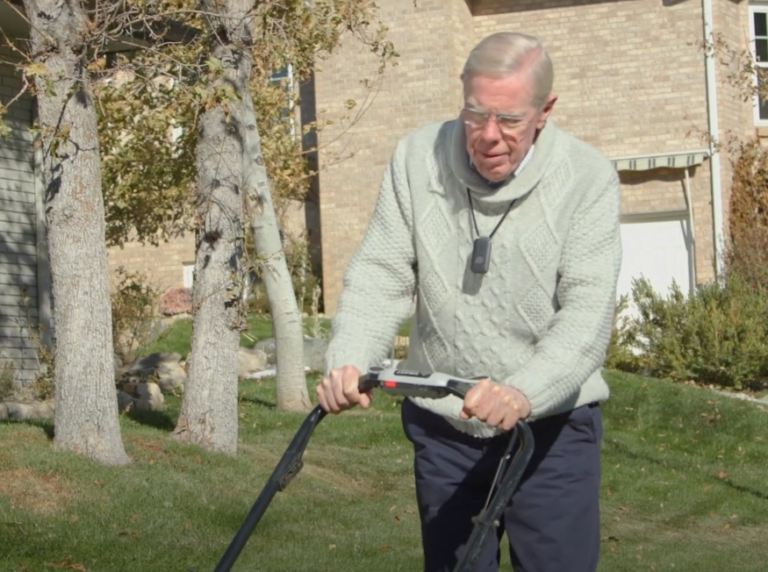
Evolution of Medical Alert Systems
The evolution of medical alert systems is a testament to the power of technology and its capacity to transform lives. From their humble beginnings as simple, home-based units operating over a landline connection, medical alert systems have undergone significant advancements to become the sophisticated, life-saving devices we know today.
In the early stages, medical alert systems were simple devices that functioned within the confines of the user’s home. They were tethered to a landline connection and consisted of a base unit and a wearable pendant or wristband with a help button. When pressed, the button would send a signal to a monitoring center, alerting them of a potential emergency.
However, as technology advanced, so did these systems. The advent of cellular technology marked a significant turning point in the evolution of medical alert systems. This allowed for the development of mobile medical alert systems, which operate on a cellular network and provide coverage wherever there is cellular service. This was a major breakthrough, as it meant that users could now take their devices with them wherever they went, extending the coverage beyond the home.
Today, mobile medical alert systems are equipped with a plethora of advanced features designed to enhance their reliability and efficiency. GPS tracking technology is one such feature, allowing the monitoring center to pinpoint the user’s exact location in the event of an emergency. This is particularly useful for situations where the user is unable to communicate their location, such as in the event of a severe fall or medical emergency.
Automatic fall detection is another significant advancement. This feature uses advanced sensors to detect falls, automatically alerting the monitoring center even if the user is unable to press the help button. This can be a lifesaver in situations where the user is rendered unconscious or immobile following a fall.
In addition to these, some mobile medical alert systems now offer medication reminders and check-in services, further enhancing their utility. Medication reminders can help users maintain their medication regimen, while check-in services provide regular check-ins to ensure the user’s well-being.
The evolution of medical alert systems is a clear demonstration of how technology can be harnessed to improve health outcomes and enhance quality of life. As we look to the future, we can expect further advancements in this field, with medical alert systems becoming even more sophisticated and capable.
How Do Medical Alert Systems Work?
Medical alert systems function as a bridge between users and emergency services, providing a swift and efficient means of communication during emergencies. Here’s a detailed look at how they work:
When the button on the medical alert device is pressed, it sends a signal to the monitoring center. This signal is transmitted via a landline or cellular connection, depending on the type of system in use. The mobile medical alert systems leverage the power of cellular networks, allowing them to function anywhere there’s cellular coverage.
Once the signal is received at the monitoring center, an operator gets in touch with the user through a speaker on the device. This two-way communication allows the operator to assess the situation and provide immediate assistance. If the user is unable to respond, or if they confirm that they need help, the operator will contact the appropriate emergency services.
One of the significant advancements in medical alert systems is the introduction of automatic fall detection features. These systems are equipped with sensors that can detect a fall based on the movement and orientation of the device. If a fall is detected, the system automatically sends a signal to the monitoring center, even if the user is unable to press the button. This feature is particularly useful for users who are at risk of falls that could leave them unconscious or immobile.
In essence, medical alert systems work as a lifeline for users, providing them with a simple and efficient way to call for help in an emergency. They are a vital tool in the healthcare sector, offering users and their loved ones peace of mind knowing that help is just a button press away. As technology continues to evolve, we can expect these systems to become even more efficient and user-friendly.
The Need for a Mobile Medical Alert System
In today’s fast-paced world, the need for a mobile medical alert system is more pressing than ever. With an aging population and an increasing desire for independence among seniors, these systems provide a safety net that allows them to live their lives freely, without the constant worry of what might happen in the event of a medical emergency.
Mobile medical alert systems are not just for the elderly or those with serious health conditions. They are for anyone who values their independence but also recognizes the importance of having a safety measure in place. Whether you’re out gardening, walking in the park, or even traveling out of town, these systems ensure that help is just a button press away.
The ongoing COVID-19 pandemic has further underscored the importance of these systems. For those who are at a higher risk of severe illness, such as the elderly and those with underlying health conditions, having a medical alert system can provide an additional layer of safety. It ensures that medical help is readily available, reducing the risk of complications and improving the chances of recovery.
Moreover, as technology continues to advance, we can expect to see even more features added to these systems, making them an essential tool for ensuring the safety and well-being of seniors. Features like automatic fall detection, GPS location tracking, and cellular connection have already made these systems more efficient and reliable. Future advancements may include more sophisticated health monitoring features, integration with other smart devices, and even AI-powered predictive analytics to anticipate health issues before they become emergencies.
The need for a mobile medical alert system is not just a luxury but a necessity in today’s world. It’s an investment in safety and peace of mind, providing the assurance that no matter where life takes you, help is always within reach.

What is a mobile medical alert device and how does it work?
A mobile medical alert device is a portable device that works on a cellular network, allowing the user to take it wherever they go.
What are the top Mobile Medical Alert System in 2024?

Reviews: The Top Mobile Medical Alert Systems in 2024
Overview of Top Mobile Medical Alert Systems
The market for mobile medical alert systems is more competitive than ever, with numerous companies offering advanced features to ensure the safety and well-being of their users. These systems are designed to provide immediate assistance in the event of a medical emergency, particularly for seniors and individuals with health conditions. The top systems are characterized by their reliability, ease of use, and innovative features such as GPS tracking, automatic fall detection, and cellular connectivity.
Detailed Review of Each Top System
1. Bay Alarm Medical
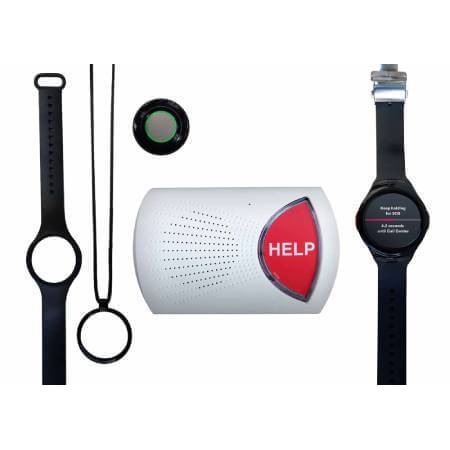
Bay Alarm Medical
Our Rating:

Known for its high-quality service and affordable pricing, Bay Alarm Medical offers a range of medical alert systems, including a mobile option. The mobile system is compact and easy to carry, with a long battery life and reliable GPS technology. It also offers an optional fall detection feature.
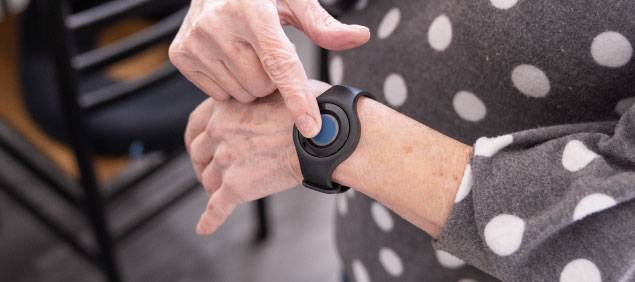
Pros of Bay Alarm Medical Mobile Medical Alert System
Cons of Bay Alarm Medical Mobile Medical Alert System
2. Medical Guardian
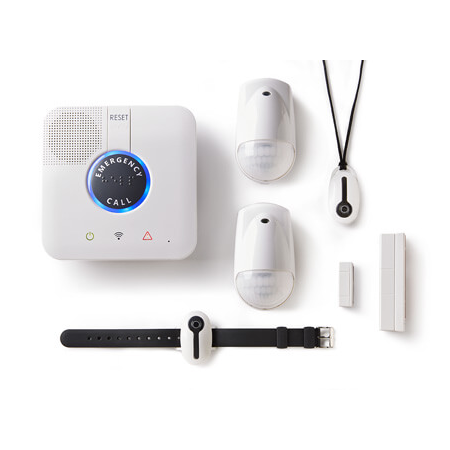
Medical Guardian
Our Rating:

Medical Guardian is a leading provider of medical alert systems, offering both home and mobile options. Their mobile system, the Mobile Guardian, is designed for active individuals, featuring a portable device with GPS tracking and a wearable button. The system also includes a 24/7 monitoring service.

Pros of Medical Guardian Mobile Medical Alert System
Cons of Medical Guardian Mobile Medical Alert System
3. ADT Medical Alert

ADT Medical Alert
Our Rating:

A well-known name in the security industry, ADT offers a mobile medical alert system with GPS location tracking and fall detection. The system includes a lightweight, waterproof device that can be worn as a pendant or on a belt clip.

Pros of ADT Medical Alert Mobile Medical Alert System
Cons of ADT Medical Alert Mobile Medical Alert System
4. Aloe Care Health
Best on ease of use
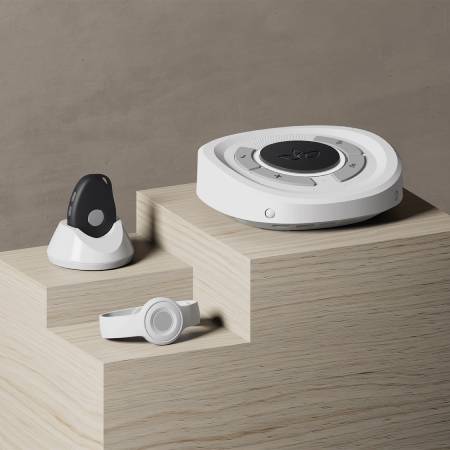
Aloe Care Health
Our Rating:

Aloe Care Health offers a comprehensive mobile medical alert system with a range of features, including voice-activated calling, motion sensors, and a mobile app for caregivers. The system also includes automatic fall detection and a 24/7 emergency call center.

Pros of Aloe Care Health
Cons of Aloe Care Health
5. LifeFone Medical Alert
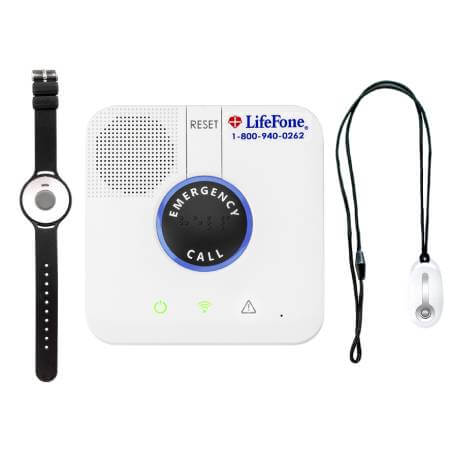
LifeFone Medical Alert
Our Rating:

LifeFone‘s mobile medical alert system is a comprehensive solution designed to provide safety and peace of mind for users both at home and on the go. The system includes a base unit for the home and a mobile device that uses cellular technology on the AT&T network.
One of the unique features of LifeFone’s system is the two-way voice communication pendant, which allows users to speak directly through the pendant, enhancing accessibility during emergencies. LifeFone also offers 24/7 monitoring and customer service from centers based in the U.S.
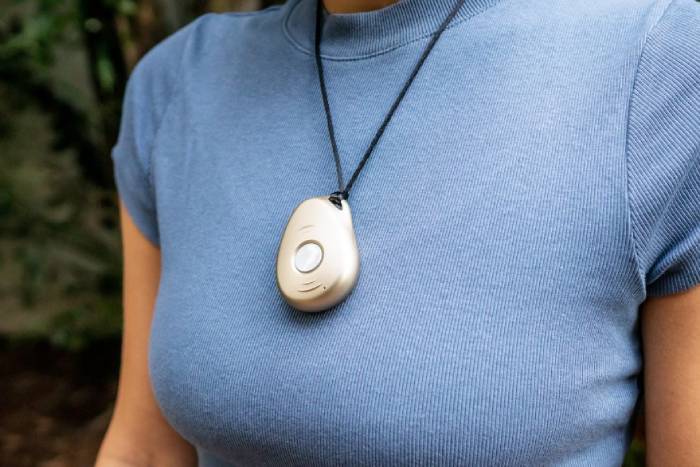
Pros of LifeFone Mobile Medical Alert System
Cons of LifeFone Mobile Medical Alert System
Comparison of Top Systems
When comparing the top mobile medical alert systems, several factors come into play. These include the range of features offered, the cost of the system, the reliability of the devices, and the quality of the monitoring service.
Bay Alarm Medical and Medical Guardian both offer a wide range of features, including GPS tracking and fall detection, and they have a reputation for reliable service. ADT Medical Alert is a good option for those who value brand recognition and have a higher budget, while Aloe Care Health and Go Medical Alert offer unique features such as voice-activated calling and a mobile app for caregivers.
In terms of cost, Bay Alarm Medical and Go Medical Alert are generally more affordable, while Medical Guardian, ADT Medical Alert, and Aloe Care Health are on the higher end of the price spectrum. However, the cost can vary depending on any additional features or services chosen.
Overall, the best mobile medical alert system will depend on the individual’s specific needs and circumstances. It’s important to consider all factors and choose a system that offers the best balance of features, cost, and reliability.
Features of the Best Mobile Medical Alert Systems
Automatic Fall Detection
One of the most critical features in a mobile medical alert system is automatic fall detection. Falls are a common cause of injury among seniors, and in many cases, the individual may not be able to manually activate their alert system after a fall.
Automatic fall detection uses advanced sensors to detect a fall and automatically send an alert to the monitoring center. This feature provides an extra layer of protection, ensuring that help can be dispatched even if the user is unable to press the button.
GPS Location Tracking
GPS location tracking is another essential feature in a mobile medical alert system. This feature uses GPS technology to track the location of the user, which can be crucial in an emergency situation.
If the user activates the alert system, the monitoring center can use the GPS data to determine their location and direct emergency services to them. This feature is particularly useful for active seniors who often leave their homes, as it ensures they can receive help no matter where they are.
Battery Life
The battery life of a mobile medical alert system is a critical factor to consider. The system needs to be operational at all times to ensure the user can get help when they need it. Most mobile medical alert devices have a battery life that lasts for several days, and some even last for a few weeks.
It’s important to regularly check the battery level and recharge the device as needed. Some systems also have a low battery alert feature, which notifies the user or the monitoring center when the battery needs to be recharged.
Cellular Network Connection
A cellular network connection is what allows a mobile medical alert system to communicate with the monitoring center. When the user presses the button on their device, a signal is sent over the cellular network to the monitoring center. This means that the device can be used anywhere there is cellular coverage.
Some systems use a specific cellular provider, while others can operate on any network. It’s important to check the cellular coverage in your area before choosing a system.
Wearable Device Features
The best mobile medical alert systems come with a wearable device that the user can keep with them at all times. This device is typically a pendant or wristband with a button that the user can press to activate the alert system. Some devices are waterproof, allowing the user to wear them in the shower or while doing dishes.
Other features to look for include a comfortable design, a long range from the base unit, and a loud speaker for two-way communication with the monitoring center.
Cost of Mobile Medical Alert Systems
Understanding the Cost Structure
When considering a mobile medical alert system, it’s important to understand the cost structure. The cost of these systems can vary widely depending on the features and services provided. Generally, the cost structure of a mobile medical alert system includes a monthly fee, equipment fees, and possibly activation fees.
The monthly fee covers the use of the system and the monitoring service. This fee can range from around $20 to over $50 per month, depending on the provider and the package chosen.
Equipment fees cover the cost of the medical alert device itself. Some companies include the equipment in the monthly fee, while others charge a separate one-time fee.
Monthly Fees and Equipment Fees
Monthly fees for mobile medical alert systems typically range from around $20 to over $50. This fee usually includes the use of the equipment and the 24/7 monitoring service. Some companies offer discounts for paying annually or semi-annually instead of monthly.
Equipment fees can vary widely. Some companies include the cost of the equipment in the monthly fee, while others charge a separate one-time fee. The cost can range from $50 to several hundred dollars, depending on the system. It’s important to clarify what is included in the equipment package, as some companies may charge extra for additional devices or features.
Activation Fees and Other Hidden Costs
In addition to the monthly and equipment fees, some companies may charge an activation fee to start the service. This fee can range from $50 to $100 or more. However, some companies waive this fee as part of a promotional offer.
There may also be other hidden costs to consider. For example, some companies charge a fee for the optional fall detection feature. Others may charge extra for a cellular service if the system uses a cellular connection instead of a landline. It’s important to read the fine print and ask about all potential fees before choosing a system.
Affordable Medical Alert Systems
While the cost of a mobile medical alert system can be a significant consideration, there are affordable options available. Some companies offer basic packages with fewer features at a lower cost. There are also companies that offer discounts for annual or semi-annual payments, which can make the system more affordable over the long term.
When considering the cost, it’s also important to consider the value of the service. A mobile medical alert system can provide peace of mind and potentially life-saving assistance in an emergency, which can be invaluable.
Price Lock Guarantee
Some companies offer a price lock guarantee, which means the monthly fee will not increase over time. This can be a valuable feature, as it provides cost certainty for the user. However, not all companies offer this guarantee, so it’s important to ask about it when considering different systems.
Medical Alert System Providers
Overview of Medical Alert System Providers
There are numerous medical alert system providers in the market, each offering different features and services. These providers range from well-established companies with a long history in the industry to newer companies that leverage the latest technology to provide innovative solutions. When choosing a provider, it’s important to consider factors such as the features offered, the cost of the system, the quality of the monitoring service, and the company’s reputation for customer service.

Bay Alarm Medical is a renowned provider in the medical alert industry, with a mission to protect the most important things in life – family, health, and independence. With over 70 years of experience, they have built a reputation for delivering when seconds matter the most.
They offer a variety of medical alert systems, including in-home and mobile systems, all designed to provide the best senior life-saving alert systems in the nation. Their mobile medical alert system is designed to provide protection wherever the user goes, ensuring that help is always within reach.
One of the key features of Bay Alarm Medical’s services is their monitoring center. Their clients are fully protected with industry-leading medical alert technology and backed by one of the country’s most reliable, USA-based, 24-hour medical alarm emergency call centers. This means that in the event of an emergency, users can get the help they need quickly and efficiently.

Medical Guardian is another leading provider of medical alert systems. They offer both home and mobile systems, with a variety of features such as GPS tracking, fall detection, and two-way communication. Medical Guardian’s systems are designed to be user-friendly and reliable, providing peace of mind for users and their loved ones.
Medical Guardian is a leading provider of innovative medical alert systems that empower people to live a life without limits. A top-rated medical alert company with a 98% customer satisfaction rating, Medical Guardian is trusted by thousands to provide quality care and comprehensive 24/7 protection. Whether it’s an in-home system or a mobile device with GPS capabilities, Medical Guardian ensures that help is always just a button press away.
Their mobile medical alert system, the Mobile Guardian, is designed to provide protection both at home and on-the-go. It features a portable device with a built-in speaker and microphone for two-way communication with the monitoring center. The device uses GPS and Wi-Fi technology to pinpoint the user’s location during an emergency, ensuring that help can be dispatched accurately.

ADT Medical Alert is a branch of the well-known security company, ADT, which has been in operation for over 145 years. ADT Medical Alert has been providing medical alert systems since 2004, leveraging the company’s extensive experience in security system monitoring.
ADT Medical Alert offers two dedicated home-based systems and an all-in-one home + mobile system. Each system includes a pendant or wristband wearable button, two-way communication, monthly monitoring, and activation.
The Medical Alert Basic system offers a coverage range of 300 feet, making it suitable for whole-home coverage. It features two-way communication but requires a standard landline telephone service. The system includes a base unit and one waterproof pendant or wristband. Home temperature monitoring is also included, but fall detection is not an option with this unit.
The Medical Alert Plus is ADT’s most advanced home unit. It offers a range of 600 feet, making it suitable for large homes and yards. It operates on its own AT&T cellular service, so a landline or internet connection is not needed. The Plus system also includes home temperature monitoring, and fall detection can be added for an additional charge.
The On-The-Go system is ADT’s mobile system that uses AT&T’s cellular network. The device comes with built-in GPS technology for location services in the event of emergencies away from home. It has two-way talk capabilities, and fall detection is an optional add-on for an extra charge.
ADT’s monitoring centers are U.S. based and owned/operated by ADT, with the average tenure of ADT Medical Alert agents being 7 years. Agents undergo 200 hours of training to be certified as an ADT agent. Additionally, ADT’s monitoring centers are certified by The Monitoring Association with the Five Diamond certification.
In terms of cost, ADT’s systems range from a monthly price of $29.99 for the basic unit, to $35.99 for the plus unit, and $39.99 for the mobile unit. Fall detection can be added to the plus or mobile units for an additional $10.00 monthly. Additional pendants for spouses come with a one-time charge of $14.99 each, and an extra $5.00 monthly.
While ADT Medical Alert is a reliable provider with a long-standing reputation in the security industry, it’s worth noting that it has a higher price point compared to some other providers. However, for those who value the reliability and comprehensive service of a well-established company, ADT Medical Alert could be a good choice.
Other Medical Alert Companies
In addition to the providers mentioned above, there are several other companies offering mobile medical alert systems. These include:

Aloe Care Health is a modern provider of medical alert systems that leverages advanced technology to ensure the safety and well-being of its users. The company offers a comprehensive system that includes a smart hub, a mobile companion, and an app for caregivers.
The Smart Hub is a voice-activated base station that connects directly to the emergency response center when needed. It can be activated by pressing a button within a 200 ft radius or by voice activation, making it highly accessible and user-friendly.The Mobile Companion is a wearable device that provides coverage both inside and outside the home.
It operates on a 4G LTE network and comes equipped with GPS and automatic fall detection. This device is connected with the Family App, keeping caregivers updated on the user’s location and well-being.The Aloe Care App allows caregivers to stay connected with their loved ones, providing real-time updates and the ability to make App-to-Hub calls. This feature does not require a landline or WiFi, making it highly convenient.
For those who opt for the Total Care package, Aloe Care Health offers a Smart Fall Sensor. This sensor creates a 3D map of the room it’s placed in and can detect if the person in the room is sitting, standing, or lying down. If it detects someone has been lying down for 1-2 minutes, it will send a voice prompt asking the user to stand. If it does not sense them standing up after one minute, a call will be made to the emergency response team at the monitoring center unless cancelled.
Aloe Care Health offers four system packages: Mobile Companion, Essentials, Essentials Plus, and Total Care. Each package is designed to cater to different needs and lifestyles, ensuring that users can find a system that suits them best.Aloe Care Health is a forward-thinking provider of medical alert systems, offering advanced features and a comprehensive approach to ensure the safety and well-being of its users.

LifeFone is a well-established provider of medical alert systems, boasting more than 40 years in the industry. The company is known for its high-quality and reliable systems, which offer a wealth of features, including a unique two-way voice communication pendant.
LifeFone offers both home-based medical alert systems in landline and cellular options, as well as a mobile device. The at-home system is a basic unit with two-way communication and a wristband with an emergency button that has a range of 1,300 feet. The base has a 32-hour backup battery in the event of a power outage. The unit is available in a landline option or a cellular option using AT&T service.
A fall detection pendant can be added to both units for an extra monthly fee.The on-the-go system includes a base unit for the home, as well as a mobile device for use on the go, providing total coverage no matter where the user is. Both the home unit and the mobile device use cellular technology on AT&T’s network. An optional fall detection pendant may also be added to these systems for an extra fee.
LifeFone also offers this system with a two-way voice communication pendant, allowing a user to speak directly through the pendant instead of the home base or mobile device. This unique option makes it easier for users to speak with an emergency operator when they are far away from the main unit.
LifeFone features 24/7 monitoring and customer service at centers based in the U.S. The company owns its primary call center, which is attached to its home office in New York, and contracts two back-up facilities as needed. Monitoring plans may be customized to a user’s preference so LifeFone may respond according to a user’s wishes in the event of an emergency.
LifeFone has a generally positive reputation, including an A+ rating with the Better Business Bureau and recognition from several top health organizations and publications. The company promotes several guarantees to ensure customer satisfaction.
In addition to a 30-day money-back guarantee, LifeFone offers a lifetime guarantee on price and equipment, meaning the price of a customer’s service will never change, and they will never be saddled with faulty equipment.LifeFone is a reliable provider rich with features and customization to meet the needs of its users. However, users should be aware that the numerous options can quickly increase the monthly cost and could be intimidating to users looking for a simple system.
When choosing a provider, it’s important to consider your specific needs and circumstances, and to compare the features, costs, and reviews of different systems.
User Experience with Mobile Medical Alert Systems
How Users Interact with Mobile Medical Alert Systems
Users interact with mobile medical alert systems primarily through a wearable device, such as a pendant or wristband, that features a help button. When the button is pressed, it sends a signal to a monitoring center, initiating two-way communication with a trained operator. The operator can then assess the situation and dispatch emergency services if necessary.
Some systems also include a mobile app or online portal where users can adjust settings, check the status of their system, and even view their location via GPS tracking. These digital interfaces are designed to be user-friendly, making it easy for users of all ages and tech-savviness levels to interact with their system.
Benefits of Mobile Systems
Mobile medical alert systems offer several benefits over traditional in-home systems:
- Mobility: As the name suggests, these systems are designed to be used on the go. They operate on a cellular network, allowing users to take them wherever they go.
- GPS Location Tracking: This feature allows the monitoring center to locate the user in case of an emergency, which is particularly useful when the user is away from home.
- Flexibility: Mobile systems can be used both at home and on the go, providing continuous protection no matter where the user is.
- Peace of Mind: Knowing that help is just a button press away can provide peace of mind for both the user and their loved ones.
Challenges Faced by Users
While mobile medical alert systems offer numerous benefits, users may face some challenges:
- Cost: Mobile systems are generally more expensive than in-home systems due to the additional technology and features they include.
- Battery Life: Because they rely on battery power, mobile devices need to be charged regularly. This can be a challenge for users who forget to charge their devices or who are away from home for extended periods.
- Cellular Coverage: Mobile systems rely on cellular coverage to communicate with the monitoring center. If the user is in an area with poor or no coverage, the system may not work properly.
User Testimonials
User testimonials can provide valuable insights into the real-world use of mobile medical alert systems. Many users appreciate the peace of mind these systems provide, noting that they feel safer knowing that help is just a button press away. Others praise the helpfulness and responsiveness of the monitoring centers. However, some users have noted challenges with battery life and cellular coverage, underscoring the importance of considering these factors when choosing a system.

Tips for Choosing the Right Medical Alert System
When choosing a mobile medical alert system, consider the following tips:
- Evaluate Your Needs: Consider your lifestyle and medical needs. If you’re active and often away from home, a mobile system may be the best choice.
- Consider the Features: Look for features that meet your needs, such as GPS tracking, fall detection, and battery life.
- Check Cellular Coverage: Since mobile systems rely on cellular coverage, make sure the system will work in your area.
- Read Reviews: User reviews and testimonials can provide valuable insights into the reliability and usability of different systems.
- Understand the Costs: Make sure you understand all the costs involved, including monthly fees, equipment fees, and any activation fees or other hidden costs.
In-Home vs. On-the-Go Systems
Understanding In-Home Systems
In-home medical alert systems are designed to provide emergency assistance within the home. These systems typically consist of a base unit that connects to a landline or cellular network, and a wearable device with a help button. When the button is pressed, the system connects the user to a monitoring center, where a trained operator can assess the situation and dispatch emergency services if necessary.
In-home systems often include features such as automatic fall detection, two-way communication, and a range of several hundred feet from the base unit. These systems are typically less expensive than mobile systems, making them a popular choice for individuals who spend most of their time at home.
Understanding On-the-Go Systems
On-the-go systems, also known as mobile medical alert systems, offer the same basic functionality as in-home systems but with the added benefit of mobility. These systems use a cellular network to connect to the monitoring center, allowing the user to take the system with them wherever they go.
Mobile systems often include features such as GPS location tracking, which allows the monitoring center to locate the user in case of an emergency. Some systems also include a mobile app or online portal where users can adjust settings and check the status of their system.
Comparison of In-Home and On-the-Go Systems
While both in-home and on-the-go systems provide valuable emergency assistance, there are key differences between the two:
- Range: In-home systems typically have a range of several hundred feet from the base unit, while mobile systems can be used anywhere there is cellular coverage.
- Features: Both types of systems offer features such as fall detection and two-way communication. However, mobile systems often include additional features such as GPS tracking.
- Cost: In-home systems are generally less expensive than mobile systems. However, the cost can vary depending on the features and services included.
Choosing Between In-Home and On-the-Go Systems
The choice between an in-home and a mobile system will depend on the individual’s lifestyle and needs. If the individual spends most of their time at home, an in-home system may be sufficient. However, if the individual is active and often away from home, a mobile system may be a better choice.
When choosing a system, it’s important to consider factors such as the range, features, cost, and the reliability of the provider. It’s also a good idea to read reviews and testimonials from other users to get a sense of the system’s performance and reliability.
The Future of Home and Mobile Systems
As technology continues to advance, we can expect to see even more features added to both in-home and mobile medical alert systems. For example, future systems may include advanced health monitoring features, such as heart rate monitoring or sleep tracking. Additionally, as cellular coverage continues to improve, mobile systems are likely to become even more reliable and accessible.
Regardless of the specific features, the goal of any medical alert system is to provide peace of mind and ensure the safety of the user. By understanding the differences between in-home and mobile systems, individuals can choose the system that best meets their needs.
Emergency Response and Monitoring Services

Role of Monitoring Centers
Monitoring centers play a crucial role in the operation of medical alert systems. These centers are staffed by trained operators who are available 24/7 to respond to alerts. When a user presses the help button on their device, the signal is sent to the monitoring center. The operator then communicates with the user through the system’s two-way communication feature to assess the situation. If necessary, the operator can dispatch emergency services to the user’s location.
Monitoring centers are equipped with advanced technology to ensure reliable and efficient communication. They also have protocols in place to handle different types of emergencies, from medical crises to fires and home invasions.
How Emergency Services Respond
When emergency services are dispatched by a monitoring center, they respond as quickly as possible. The specific response will depend on the nature of the emergency. For medical emergencies, an ambulance is typically dispatched to provide immediate medical assistance. For fires or home invasions, the police or fire department may be dispatched.
The monitoring center provides the emergency responders with the user’s location and any relevant information about the situation. This information can be crucial in ensuring a quick and effective response.
Importance of Quick Emergency Response
A quick emergency response can be life-saving in a medical crisis. In situations such as heart attacks or strokes, every minute counts. The faster medical assistance can be provided, the better the chances of a positive outcome.
Medical alert systems are designed to facilitate a quick emergency response. By providing a direct line of communication to a monitoring center, these systems ensure that help can be dispatched immediately when needed.
Role of GPS Tracking Technology in Emergency Response
GPS tracking technology plays a crucial role in emergency response. When a user activates their medical alert system, the GPS technology can provide their exact location to the monitoring center. This information can then be passed on to emergency services, ensuring they can find the user quickly, even if the user is unable to provide their location.
This feature is particularly useful in mobile medical alert systems, which are designed to be used both at home and on the go. With GPS tracking, users can receive emergency assistance no matter where they are.
Contacting Emergency Services through Medical Alert Systems
Medical alert systems provide a direct line of communication to emergency services. When the help button is pressed, the user is connected to a monitoring center. The operator at the center can then assess the situation and contact emergency services if necessary.
Some systems also include a feature that allows users to contact emergency services directly. This can be particularly useful in situations where the user is able to communicate their needs directly to the emergency responders.
In all cases, the goal of a medical alert system is to ensure that users can receive help quickly and efficiently in an emergency. By providing a direct line of communication to emergency services, these systems can provide peace of mind for users and their loved ones.
FAQs on Mobile Medical Alert Systems
What are the best medical alert systems available today?
The best medical alert systems vary depending on individual needs and circumstances. However, some of the top-rated providers include Bay Alarm Medical, Medical Guardian, and LifeFone. These companies offer a range of systems, including in-home and mobile options, with features like fall detection, GPS tracking, and 24/7 monitoring.
What is a home medical alert system and how does it work?
A home medical alert system is a device designed to signal the presence of a hazard requiring urgent attention and to summon emergency medical personnel. Most systems come with a base unit and a wearable help button. When the button is pressed, the system connects the user to a personal emergency response system where trained operators can send help.
Who are some of the top medical alert providers?
Some of the top medical alert providers include Bay Alarm Medical, Medical Guardian, LifeFone, and ADT Medical Alert. These providers offer a range of systems and services to meet different needs.
Do most medical alert systems include fall detection?
Yes, most medical alert systems offer fall detection as an optional feature. A fall detection device uses sensors to detect if the user has taken a fall and automatically alerts the monitoring center.
How many medical alert systems are there?
There are many medical alert system companies available, each offering different systems and services. It’s important to research and compare options to find the best fit for your needs.
What are the top medical alert systems for home use?
The top medical alert systems for home use often include features like two-way communication, a wearable help button, and 24/7 monitoring. Some top-rated home medical alert systems are offered by companies like Bay Alarm Medical and Medical Guardian.
What features should I look for in a medical alert device?
When choosing a medical alert device, look for features that meet your specific needs. This may include a wearable pendant or wristband, a base station with two-way communication, medical alert device features like fall detection, GPS tracking, and a range that covers your home range or even on-the-go.
How do medical alert monitoring systems work?
Medical alert monitoring systems work by providing a direct line of communication to a monitoring center. When the help button on the device is pressed, the user is connected to a trained operator who can assess the situation and contact emergency services if needed.
Can medical alert system users take their devices outside the home?
Yes, many companies offer mobile medical alert systems designed for use both at home and on the go. These systems use cellular technology to connect to the monitoring center and often include GPS tracking to pinpoint the user’s location during an emergency.
What is a mobile medical alert device and how does it work?
A mobile medical alert device is a portable device that works on a cellular network, allowing the user to take it wherever they go. When the help button is pressed, the device connects the user to a monitoring center where trained operators can send help. Many mobile devices also include GPS tracking to locate the user in case of an emergency.
Conclusion and Future Trends in Mobile Medical Alert Systems
Recap of the Importance of Mobile Medical Alert Systems
Mobile medical alert systems play a crucial role in ensuring the safety and well-being of individuals, particularly the elderly and those with medical conditions. These systems provide a lifeline, allowing users to call for help in an emergency, no matter where they are. With features such as GPS location tracking, automatic fall detection, and 24/7 monitoring services, mobile medical alert systems offer peace of mind for both users and their loved ones.
Key Takeaways on the Best Mobile Medical Alert Systems
The best mobile medical alert systems offer a combination of reliable performance, user-friendly design, and essential features. Companies like Bay Alarm Medical, Medical Guardian, and ADT Medical Alert lead the market with their high-quality systems. When choosing a system, it’s important to consider factors such as the features offered, the cost, and the reputation of the provider.
Future Trends in Mobile Medical Alert Systems
The future of mobile medical alert systems is promising, with technological advancements paving the way for more sophisticated features. We can expect to see systems with advanced health monitoring features, such as heart rate monitoring or sleep tracking. As cellular coverage continues to improve, mobile systems are likely to become even more reliable and accessible. Furthermore, the integration of artificial intelligence and machine learning could lead to systems that can predict and prevent falls or other emergencies.
The Role of Technology in Shaping the Future of Mobile Medical Alert Systems
Technology plays a pivotal role in shaping the future of mobile medical alert systems. As we continue to see advancements in technology, we can expect these systems to become even more effective, reliable, and user-friendly.
One of the key technological advancements in this field is the use of GPS tracking technology. This feature allows the medical alert system providers to pinpoint the exact location of the user in case of an emergency, making it possible for help to arrive more quickly. This is particularly beneficial for mobile medical alert system users who are often on the go.
Another significant technological trend is the development of automatic fall detection. This feature uses advanced sensors to detect falls, even if the user is unable to press the help button. This can be a lifesaver, especially for users who are at risk of falls.
Furthermore, the integration of artificial intelligence (AI) and machine learning technologies into these systems is on the horizon. These technologies can potentially enhance the functionality of mobile medical alert systems by predicting potential health issues based on the user’s vital signs and activity levels.
The future may also see the integration of mobile medical alert systems with other smart devices in the home. This could allow for more comprehensive monitoring of the user’s health and safety.
Battery technology is also improving, with newer systems offering longer battery life. This ensures that the system can function for extended periods, even without access to a power source.
Lastly, as the world becomes more connected, we can expect mobile medical alert systems to become more integrated with other health and wellness apps. This could provide users with a more holistic approach to managing their health.
The future of mobile medical alert systems looks promising, with technology paving the way for more innovative and effective solutions. As a consumer, it’s important to stay informed about these developments to make the most out of your mobile medical alert system.
Final Thoughts and Advice for Consumers
Choosing the right mobile medical alert system is a significant decision that can greatly impact the user’s safety, independence, and peace of mind. With the variety of systems available in the market, it can be challenging to determine which one is the best fit.
When selecting a mobile medical alert system, consider the user’s lifestyle and needs. If the user is active and frequently on the go, a system with robust GPS tracking technology and a long battery life is crucial. This ensures that they can get help wherever they are, whether at home, running errands, or traveling.
The reputation and customer service of the medical alert system providers are also important. Look for companies that have positive reviews and testimonials from other mobile medical alert system users. This can give you a sense of the quality of their products and services.
Cost is another key consideration. While some mobile medical alert systems may seem expensive, consider the value and peace of mind they provide. Many medical alert providers include a wide range of services in their monthly fees, such as 24/7 monitoring, fall detection, and GPS location services. Be aware of any additional costs, such as activation or equipment fees. Some companies, like Bay Alarm Medical, offer a price lock guarantee, ensuring your price won’t increase over time.
Lastly, take your time in making the decision. Many medical alert system companies offer a risk-free trial period, allowing you to test out the system before committing. This can be a great way to see if the system meets your expectations and needs.
As technology continues to advance, we can expect to see even more innovative features in mobile medical alert systems. Stay informed about the latest developments in the industry to ensure you’re getting the best system for your needs.
Remember, the primary goal of a mobile medical alert system is to provide peace of mind and ensure safety. Choose a system that you feel comfortable using and trust to protect you or your loved one in an emergency.
